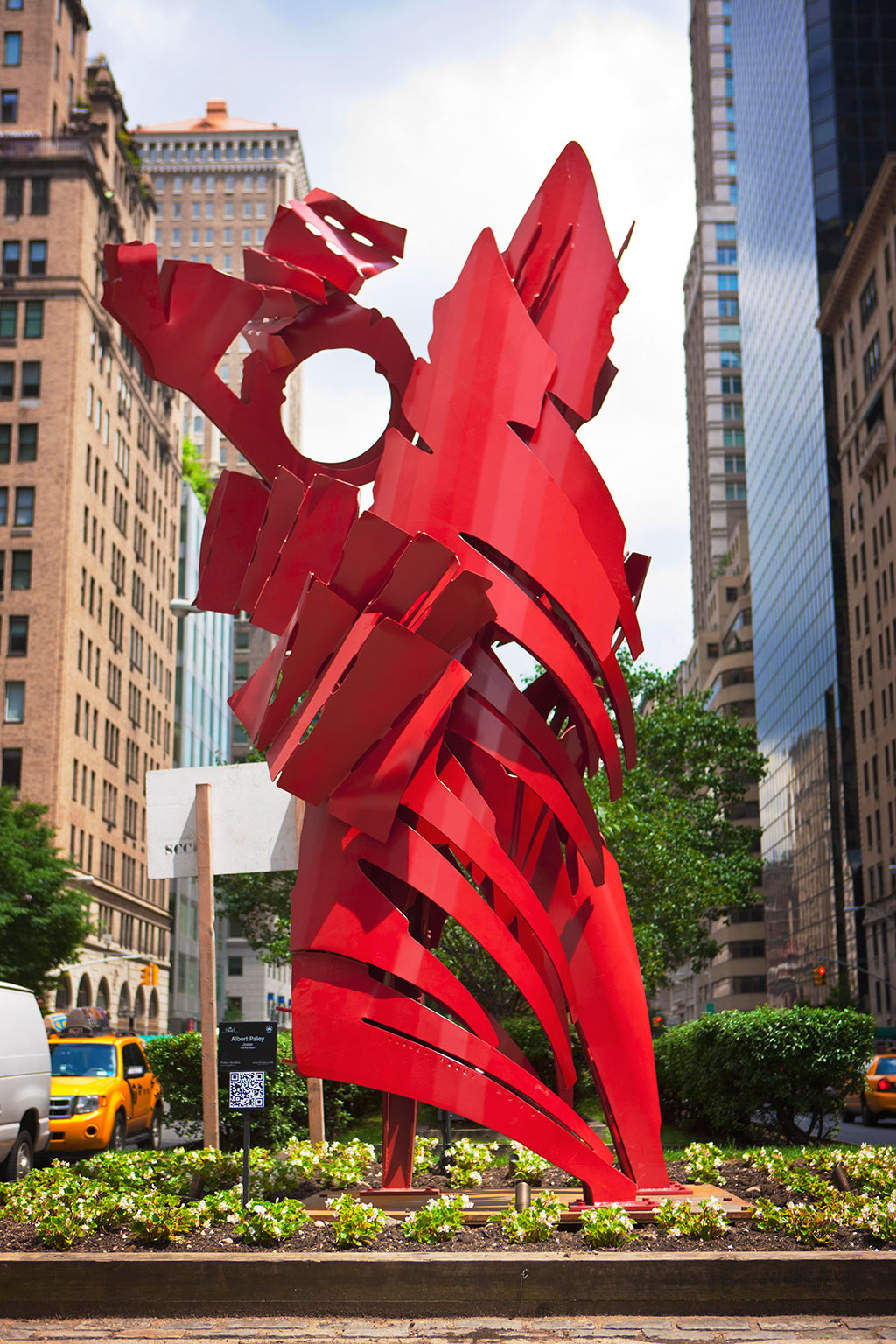loading...
Albert Paley
Albert Paley is a metal sculptor and artist. Beginning as a goldsmith, Paley’s work has evolved through time and technology to a monumental scale.
From first mental image, to drawings, to cardboard models, to CAD (computer-aided design) maquette, to final multistory welded steel sculpture, we discover that despite infinite advanced technology, the hand is still Albert Paley’s most important tool.
The monumental Portal Gates at the Renwick Gallery of the Smithsonian American Art Museum speak volumes. Upon installation, the leading art critic of the Washington Post declared Paley’s gates “the most important iron and brass work since Louis Sullivan.”
In Paley, the physicality and the artistry of working in metals come together as a defining aesthetic. “With forged iron, I deal with plasticity. I’m dealing with vulnerability. I have no idea of what I’m capable of doing. It’s only through the process and experience that I understand what my possibilities are and what my limitations are. If I don’t challenge myself, I have no idea. I have just one time to do this.”
Paley is the first metal sculptor to receive the coveted Lifetime Achievement Award from the American Institute of Architects, the AIA’s highest award to a non-architect.
His body of work includes more than 50 site specific sculptures such as Animals Always, 2006 at the St. Louis Zoo; Sentinel, 2003 on the grounds of the Rochester Institute of Technology; and Genesee Passage, 1996 at the Bausch and Lomb Headquarters, Rochester, NY. Paley on Park Avenue: New York City is a crowning achievement to a career forged through time, tempered with limitless creativity, determination, and passion.







